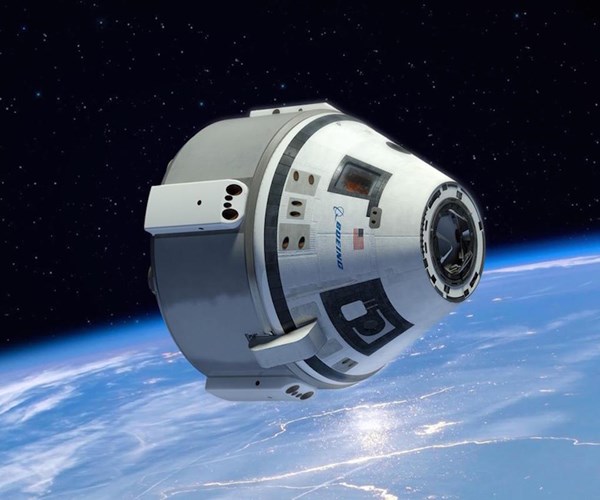Space: Where 3D Printing Innovates?
ItÔÇÖs called the ÔÇťFinal FrontierÔÇŁ but maybe space is actually a closer to a present-day trendsetter. What does that mean?

Well, there’s been a series of news items discussing how 3D printing is helping to launch various space programs. The most recent one comes from Solvay as the company is providing additive manufacturing lightweighting products to Oxford Performance Materials (OPM), which allow the development and manufacture of components for its low-Earth orbit aerospace project at Boeing.
In January, Oxford Performance Materials announced it has been selected by The Boeing Co. to manufacture 3D-printed structures for the Boeing CST-100 Starliner spacecraft, and OPM has begun shipping OXFAB production parts for installation (pictured below). The Starliner is designed to transport up to seven passengers, or a mix of crew and cargo, to low-Earth orbit destinations such as the International Space Station. It is under development in collaboration with NASA’s Commercial Crew Program. Oxford will manufacture more than 600 3D-printed parts for the Boeing CST-100 Starliner space taxis.
“From the project’s inception, we needed to provide not only significant weight and cost savings but also a drastic cut in lead-times,” says Bernard Plishtin, OPM’s chief 911▒Č┴¤═° development officer. “This was made possible by Solvay’s reliable supply of high-performance materials for our specific additive manufacturing processes for 3D-printed aerospace structures.”
Excited to see what’s next on the horizon for 3D printing and space!
[1] copy.jpg;maxWidth=600)
Related Content
-
BMW Group Vehicle to Adopt 3D Printed Center Console
A vehicle coming to market in 2027 will include a center console carrier manufactured through polymer robot-based large-format additive manufacturing (LFAM).
-
Insight Polymers & Compounding Unveils New Conductive Products Line
The new conductive products line will also be produced for injection molding and extrusion.
-
The Connector Conundrum: 3D Printed Mold Tooling’s Role in Innovation
ReelView Fishing faced an electronics obstacle in the development of its new technology for underwater video. Additive manufacturing for moldmaking allowed for the speed necessary to iterate to a solution. How inventors and invention will benefit from new ways of obtaining production-ready tooling.






